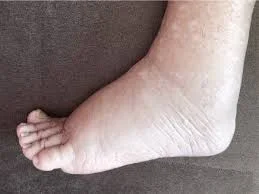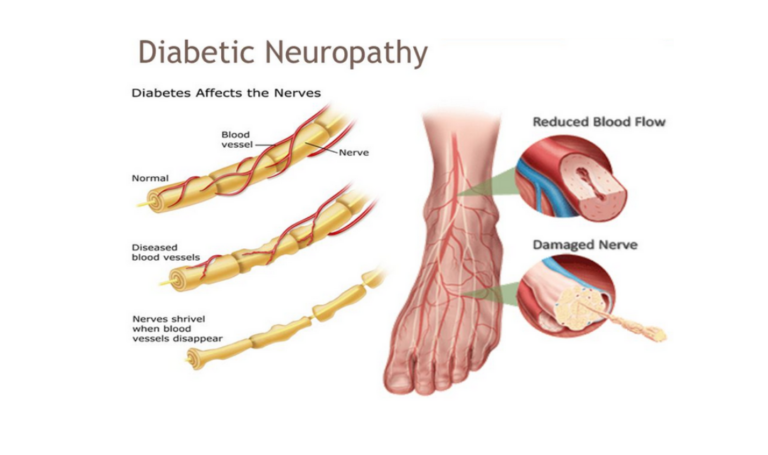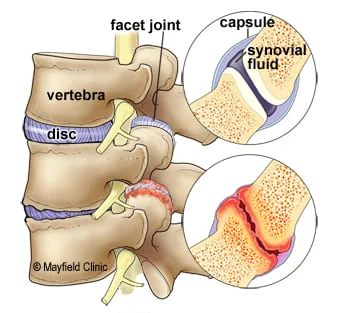Feet with Edema
Table of Contents
Introduction
Edema is a condition in which the body’s fluids accumulate abnormally. Edema is most commonly seen in the feet and ankles, where swelling is more noticeable due to gravity. Edema is commonly caused by prolonged standing or sitting, pregnancy, being overweight, or ageing. Painless edema in the ankles and feet is a common issue, especially among the elderly.
Anyone can get feet that are enlarged from time to time. It’s common, especially after long periods of walking or standing, and it’s usually treated by resting and elevating the tired dogs.
However, if it persists, you should consult a doctor because swelling (also known as edoema) can be a sign of a more serious underlying condition, such as heart failure, deep vein thrombosis (a blood clot in a leg vein), kidney disease, or liver cirrhosis. It is critical to determine the cause of your foot and ankle swelling.
When you spend a lot of time on your feet, gravity pulls blood into your leg veins, and some of the water in the blood enters your leg and foot tissues, causing them to swell. Some conditions can cause similar growth because they impair fluid movement within the body.
What is Edema?
Edema is the swelling and puffiness that occurs in various parts of the body.
It most commonly affects the skin, particularly the hands, arms, ankles, legs, and feet. However, it can also harm the muscles, bowel, lungs, eyes, and brain.
Edema is most common in elderly and pregnant people, but it can affect anyone.
Edema gradings
The degree of fluid accumulation in your tissues and the severity of your edema diagnosis are assessed using the edema grading scale.
Your physician will check for edoema by gently pressing their finger on a swollen area of your skin for five to 15 seconds (pitting test). After they release the pressure, a dimple (pit) will appear on your skin. The pit indicates that fluid has built up in your tissues.
The edoema grading scale assesses how quickly the dimple returns to normal (rebounds) following a pitting test. This scale includes:
- Grade 1: Immediate rebound with a 2-millimetre pit.
- Grade 2: Rebound in less than 15 seconds with a 3 to 4-mm pit.
- Grade 3: Rebound time is greater than 15 seconds but less than 60 seconds, with a pit depth of 5 to 6 mm.
- Grade 4: Rebound for 2-3 minutes with an 8 mm pit.
Causes of the feet with edema
Common causes of filled with fluid ankles, feet, and legs.
The swelling in the feet is frequently caused by the accumulation of fluid in these areas, known as oedema.
Feet edema is typically caused by:
- Sitting or standing in a particular position for a long period
- Consuming too much salty food
- Being overweight.
- Being pregnant
- taking certain medicines—such as some blood pressure
- Medicines, contraceptive pills, hormone therapy
- Antidepressants or steroids
- an injury—such as a strain or sprain
- an insect bite or sting.
- issues with the kidneys, liver, or heart
- A blood clot.
- An infection
Treatment of feet with edema
Mild edema usually resolves on its own. Wearing compression garments and raising the affected arm or leg above the heart can help.
Medicines that help the body eliminate excess fluid through urine can treat more severe cases of edoema. Furosemide (Lasix) is one of the most commonly prescribed water pills, also known as diuretics. A medical professional can determine whether or not water pills are necessary.
Over time, the focus is often on treating the underlying cause of swelling. If edoema is caused by a medication, a care provider may adjust the dose or seek out another medication that does not cause edoema.
The following may help reduce edoema and prevent it from recurring. Consult your healthcare provider about which of these may benefit you.
Apply pressure.
If you have edoema in your arm or leg, wearing compression stockings, sleeves, or gloves may help. These garments apply pressure to the limbs to keep fluid from building up. They are usually worn after the swelling has subsided to help prevent future swelling.
Wearing support stockings while flying during pregnancy may be beneficial.
Move.
Fluid may be moved back to the heart by contracting and utilizing the muscles in the enlarged area of the body, especially the legs. A healthcare provider can advise you on exercises that may help reduce swelling.
Raise.
Hold the swollen part of the body above the heart several times per day. Sometimes raising the swollen area while sleeping can be beneficial.
Massage.
Moving fluid out of the affected area may be aided by applying firm but non-painful pressure while stroking in the direction of the heart.
Protect.
Keep the swollen area clean and injury-free. Apply lotion or cream. Dry, cracked skin is more susceptible to scrapes, cuts, and infection. If the swelling is primarily on the feet, always wear socks or shoes.
Reduce the amount of salt.
A healthcare provider can discuss limiting salt intake. Salt can promote fluid retention and exacerbate edoema.
Treatment of Feet with Edema at Home
A small amount of foot swelling is unlikely to be a cause for concern. If you get off your feet and prop them up on a footstool, the swelling should subside after a few hours. Here are some more tips that could help reduce edema:
- Exercise your legs to help return fluid from your legs to your heart.
- Follow a low-salt diet to help reduce fluid buildup and swelling.
- Wear support stockings (available from most drugstores and medical supply stores).
- Take frequent breaks while travelling to stand and move around.
- Avoid wearing tight clothes or garters around your thighs.
- Lose weight if you have to.
Need to see your doctor about feet with edema
Report your symptoms to your doctor if the swelling is so severe that it leaves an indentation when you press your finger into it if it appears suddenly, lasts more than a few days, affects only one foot, or is accompanied by pain or skin discolouration.
Finally, do not make your diagnosis. Edema in the feet can be the first sign of heart failure, liver, or kidney disease, and your doctor should investigate these possibilities.
A doctor will take a medical history and conduct a thorough physical examination of your heart and lungs. The doctor may request blood and urine tests, a chest x-ray, an electrocardiogram, or other tests.
With so many possible causes of edoema, it’s critical to let your doctor diagnose the problem, prescribe the appropriate treatment, and get you back on your feet as soon as possible.
Complications
Untreated edoema can result in:
- painful swelling, pain that worsens
- stiffness and difficulty walking.
- Stretched, itchy skin.
- infection in the area of swelling.
- scarring between layers of tissue.
- Poor blood circulation.
- Loss of elastic properties in arteries, veins, and joints
- ulcers on the skin
Prevention
Some self-care methods can help reduce or prevent edoema.
This includes:
- Reducing salt intake
- Losing weight, as appropriate
- Getting Regular Exercise
- Raise the legs whenever possible to improve circulation.
- Wearing Supportive Stockings
- Don’t sit or stand even for too long.
- Getting up and walking around frequently when travelling.
- avoiding extreme temperatures, such as hot baths.
- Dress warmly in cold weather.
A masseuse or rehabilitation professional can assist in the removal of the fluid by stroking firmly in the direction of the heart.
Summary
Edema is a condition where fluids accumulate abnormally, often seen in the feet and ankles due to prolonged standing, pregnancy, overweightness, or ageing. Painless edema is common, especially among the elderly.
Common causes include prolonged standing, salty food, being overweight, pregnancy, taking certain medications, injuries, kidney issues, blood clots, and infections. Treatment for feet with edema can include exercise, a low-salt diet, support stockings, frequent breaks, and weight loss.
If the swelling is severe, it should be reported to a doctor. Untreated edema can lead to complications such as painful swelling, stiffness, itchy skin, infection, poor blood circulation, and skin ulcers.
FAQs
The swollen area is more susceptible to infection. Scarring occurs between tissue layers. Reduced blood flow. The arteries, veins, joints, and muscles have a decreased ability to stretch.
Depending on the cause of your diagnosis, edoema may be temporary or permanent. The swelling usually lasts several days. The swelling will be most noticeable in the first two days, but it should begin to subside by the third day.
Edema is most commonly seen in the feet and ankles, where swelling is more noticeable due to gravity. Edoema is commonly caused by prolonged standing or sitting, pregnancy, being overweight, or ageing.
Ankle pumps are a simple at-home exercise that can help reduce swelling in the ankles. To do this exercise, lie down and elevate your feet. Point your toes up towards your head, then down away from it. Repeat this exercise three times a day.
References:
- Foot, leg, and ankle swelling. (n.d.). Mount Sinai Health System. https://www.mountsinai.org/health-library/symptoms/foot-leg-and-ankle-swelling#:~:text=The%20abnormal%20buildup%20of%20fluid,overweight%2C%20and%20increase%20in%20age.
- Professional, C. C. M. (n.d.). Edema. Cleveland Clinic. https://my.clevelandclinic.org/health/diseases/12564-edema
- Website, N. (2022, January 26). Swollen ankles, feet and legs (oedema). nhs. uk. https://www.nhs.uk/conditions/oedema/
- What’s causing swollen feet and ankles? (2023, June 13). Harvard Health. https://www.health.harvard.edu/diseases-and-conditions/whats-causing-those-swollen-feet
- Brazier, Y. (2023, November 13). Everything you need to know about oedema. https://www.medicalnewstoday.com/articles/159111#prevention
- Edema – Diagnosis and treatment – Mayo Clinic. (2023, July 28). https://www.mayoclinic.org/diseases-conditions/edema/diagnosis-treatment/drc-20366532







